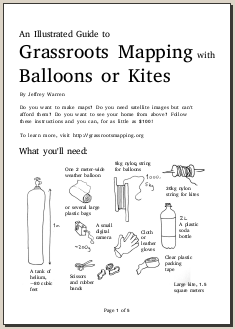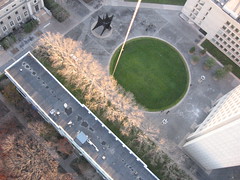February 16th, 2013 by dan.beavers
http://publiclaboratory.org/sites/default/files/imagefield_thumbs/IMG_02...
That tree between the pines likes to fly kites. I was a little upset with it because it was my kite. The tree finally got bored after about 45 minutes and let go so I am not too upset. It took me a couple of hours to find the kite but when I did there was absolutely no damage to it. I love Tyvek! The wind was very gusty and the line got snagged by the tree during an extended lull.
Tags: GrassrootsMapping, kite
Posted in DIY kite, easy-cut-delta, gulf-coast, homemade-kites, kite-mapping, mississippi, Picayune, syndicated | No Comments »
February 2nd, 2013 by dan.beavers
Wintercamp activities included working on simplifying the kite build. From the left. A pocket for the spar spreader that we were not really happy with. Next is the mini-caribener and pex plastic pipe. This was the standard attachment. The solution we arrived with eliminated the additional parts. Next are 3 mock-ups of folded pockets. The last item is the almost final form.
http://publiclaboratory.org/sites/default/files/imagefield_thumbs/IMG_00...
read more
Tags: GrassrootsMapping, kite
Posted in DIY kite, easy-cut-delta, homemade-kites, kite-mapping, syndicated | No Comments »
December 16th, 2009 by Jeffrey Warren
Josh Levinger and I met up with some activists who were planting trees in Umm Salamuna (view in Google Maps) on a hillside which is scheduled to be annexed by a nearby Israeli settlement, and converted into a graveyard. The planting was organized by Alice Gray of Bustan Qaraaqa, so that if the land is taken over, the trees would have to be uprooted or chopped down before the land can be used.. As I understand it, one of the means by which settlements claim land is by using an Israeli law which opens land to new settlement if it has lain fallow for more than three years — so planting the hillside may defend it from such a claim.
The wind was so strong that our first kite, carefully made that morning from dowels and Tyvek, shattered immediately. Instead, we launched a small soft kite with an iPod nano attached to it. Here’s a stitched image of the video footage we captured:
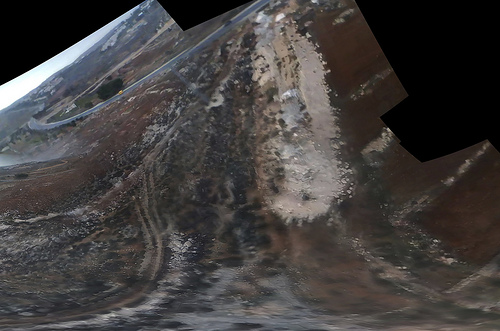
See all the pictures on Flickr.
The iPod has an SD camera which can capture many hours of video – and it’s so super light that we can fly it on a pocket kite. Many of the frames are blurred and the resolution is pretty poor (we’d thought of using a Flip camera but they’re more expensive and heavier) but when you go through the footage frame by frame you can find lots of good images. We then stitched these together with Calico and got the above image. It helped a lot to put a small ‘sail’ on the back of the iPod so it didn’t spin as much.
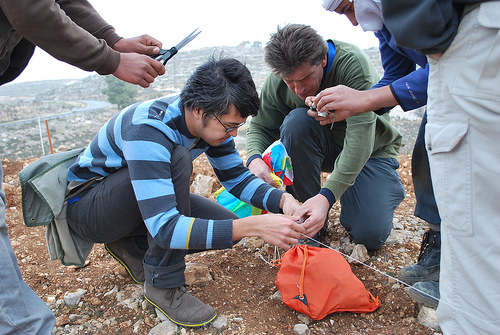
Everyone was cold but once we started flying the kites we all got really excited. The owner of the land was there with his kids and they helped assemble the rig and fly the kite:
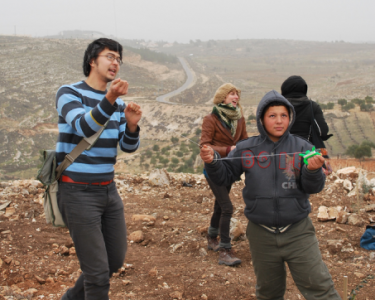
The mapping was a big success – everyone ‘got’ why we were doing it, that documenting the tree planting and how they’re changing the landscape is a form of testimony. We’re still working to rectify the imagery, and I’d like to ask folks if they have any ideas – the stitching software we’re using assumes images were taken from a single viewpoint, but the kite and camera were moving all over the place. As you can see above, the stitching distorts things and we lose a lot of detail – how can we reconstruct a high-res image that assumes multiple perspectives? I’m looking at this tutorial to start with. We’re also thinking about an algorithm to dump the clear, undistorted and unblurred frames from a movie file. Ideas?
Cross-posted with Unterbahn.com
Tags: kite, mapping, west bank
Posted in Blog | 2 Comments »










